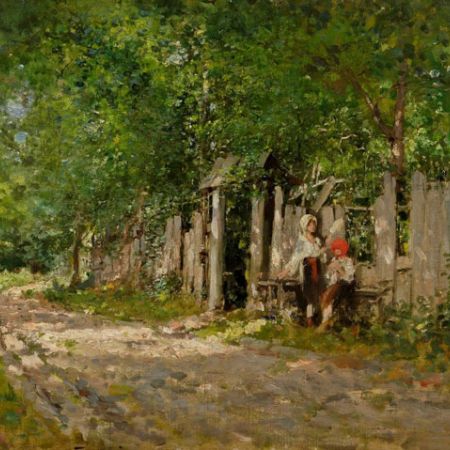
Nicolae Grigorescu, one of the Romanian masters, was born on May 15th 1838 in a small village called Pitaru, and would become one of the founders of modern Romanian painting, together with other artists such as Ion Andreescu or Stefan Luchian. An influential and very popular Classical painter, he would leave his mark on younger generations.
The family of the future artist muoved to Bucharest in 1843, after Grigorescu's father died, in a small and poor part of town. Nicolae Grigorescu worked as an apprentice in the studio of the Czech artist Anton Chladek, and also painted several religious icons for churches. It was in 1856 that he finished his first important work, a historical composition, and would later paint the inside decorations for churches, from saints and religious elements to simple decorations. In 1861, with the help of Mihail Kogalniceanu, Grigorescu left for Paris on a scholarship.
There he enrolled at the Ecole de Belles - Artes, working in the studio of Sebastien Cornu. He worked hard, in a stressful manner, trying to bring himself to the level of his more advanced coleagues and to learn as much as he could. After a while he discovered the Barbizon school and is impressed by it's principles and way of working. He would settle in the legendary place and worked, close to some of the greatest French masters. Fascinated by plein-air painting, he tried to bring together the new French style and manner with the Romanian traditional folk motifs, themes and stories.
He exhibited at the Exposition Universelle in 1867, with some success, and later he exhibited at the official Salon, in 1868. In 1873 - 1874 he travelled to Italy, Greece and Vienna, always trying to learn as much as he could about the national art, great masters, themes, masterpieces. He visited museums and galleries, talked to artists, made copies, read as much as he could, as Grigorescu wanted not only to be a good artist. He wanted to be a great one.
In 1877 - 1878 he went on the battlefield, in the Indepence War, together with the Romanian troops, as a "war painter", an experience which will inspire much of his later work, marked by the Romantism and nationalism of the era. In 1879 - 1890 he worked mostly in France, and after returning to Romania he had several successful exhibitions in Bucharest. Already a master of painting, he finally moved to Campina and for the last part of his life he would produce almost exclusivelly rural scenes and portraits. He died in Campina, on July 21st 1907, leaving his last work unfinished.
Nicolae Grigorescu was one of the most important artists in Romanian history, one of the most influential and popular painters.
2008-06-18

































